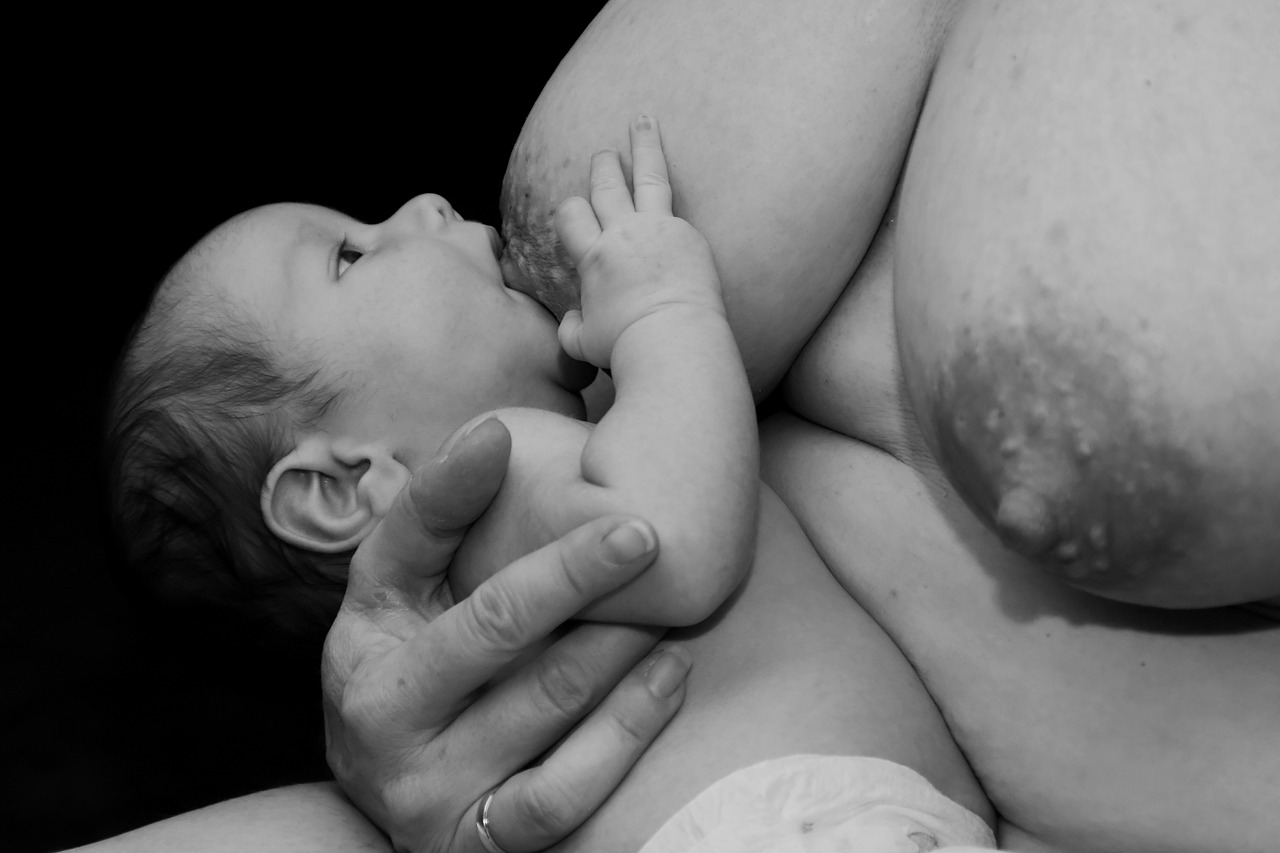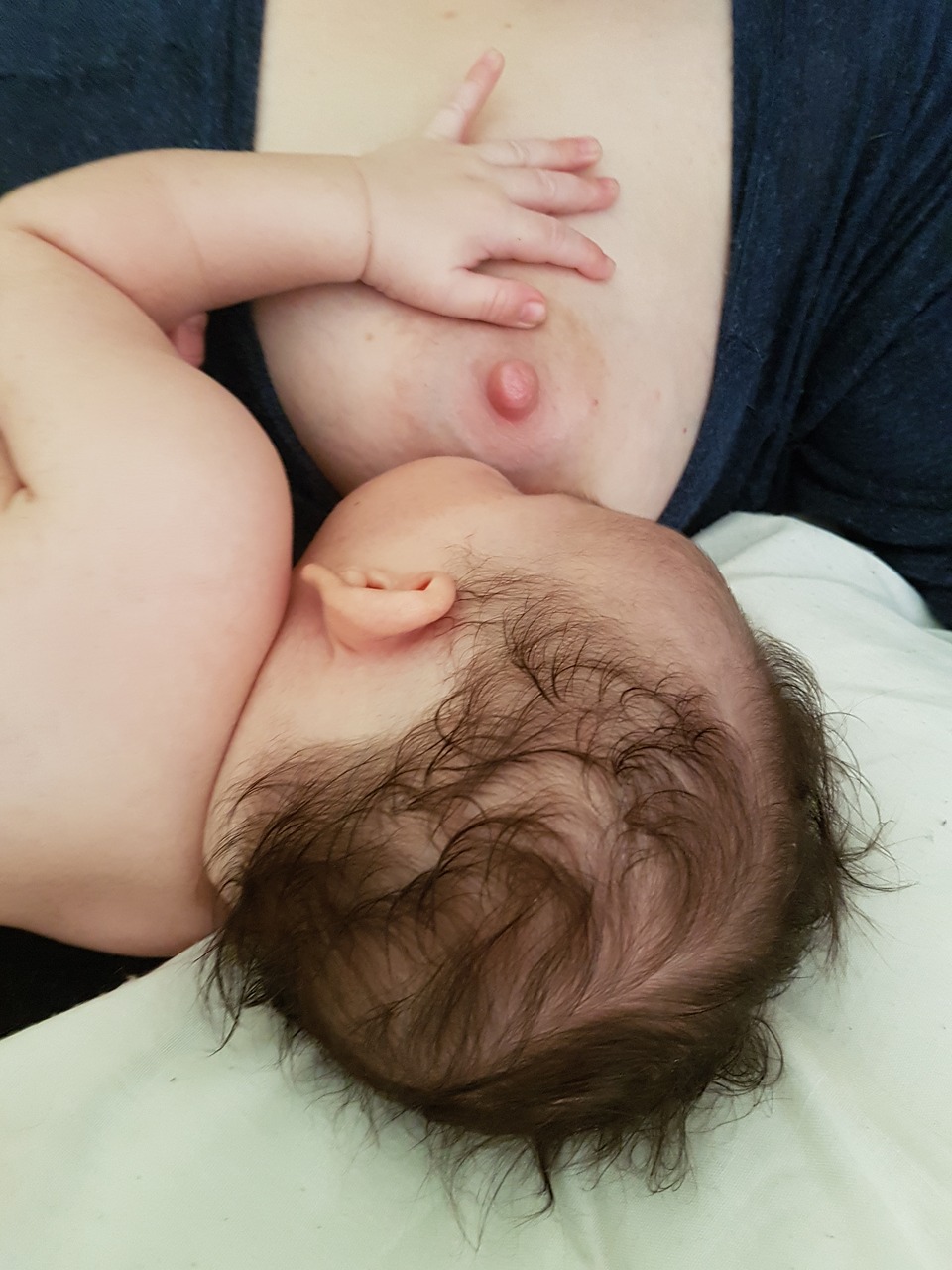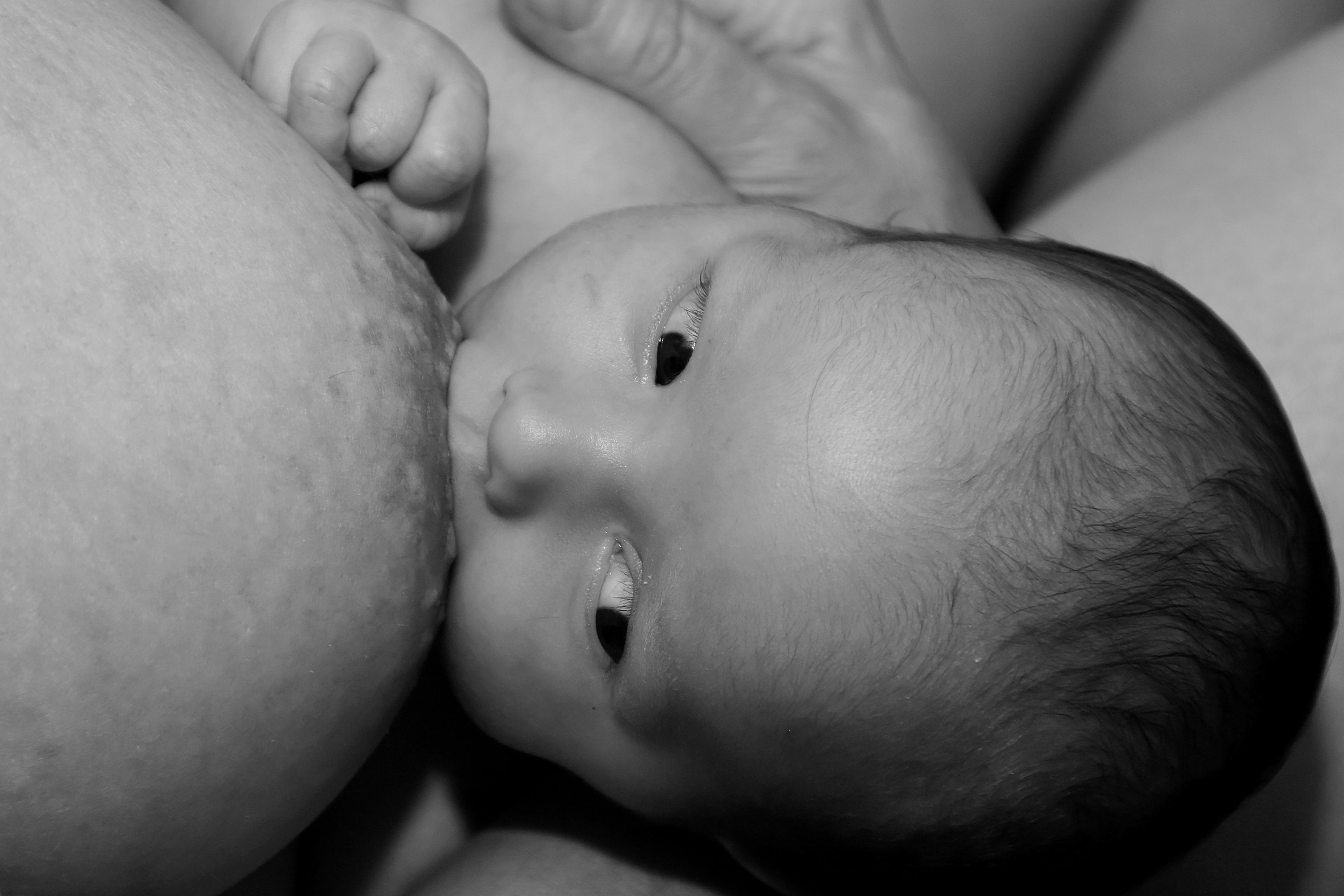I am an IBCLC (International Board Certified Lactation Consultant) in private practice in Northern Ireland and a La Leche League Leader with La Leche League of Ireland
Baby to Breast not Breast to Baby. Why? Because your breast is not a clay model.

Anyone who has breastfed / supported breastfeeding / been interested in breastfeeding will know that the key to comfortable, and efficient feeding is having baby attached well, and deeply to the breast. There are a few mantras around how to get this. You’ll have heard them. Things like tummy to tummy / nose to nipple etc. Another is that you bring baby to breast not breast to baby.
Why is that? The answer is very simple. Your breast is not a clay model. You can’t shape it, let go and then expect it to keep that shape. It is living tissue. It has a natural position that it lies on your body and it is a natural shape. Gravity acts on it. Your muscles and tendons and position of the rest of your body acts on it. If you lift your breast with your hand, move it and then let go, it will move back to its natural position.
Try it now. Lift your breast so your nipple is a few cm higher than it naturally lies. Now let go. Does it stay at that height or does it move back down to its natural position? Now put your hand back to hold your breast. This time, instead of lifting it upwards move the breast so that your nipple moves a few cm towards the middle of your body. Let go. Does it stay there or does it move back?
Of course it moves back. We all know that without even trying it. Our breasts are not a mouldable clay. They are living tissue. It moves back. We know it will..... yet we often don’t apply that knowledge when we are thinking about attaching a baby to the breast. One of the most common issues that I see around painful feeding is moving the breast to try to reach the baby’s mouth rather than bringing baby to the natural lie of the breast.
How does this affect breastfeeding?
So practically let’s consider how this works. Take a look at the image above of a baby latching on. Look how low the nipple sits and therefore how low the baby is. This is lovely positioning, but imagine if this mum had bought a feeding pillow (because she had been told antenatally that feeding pillows are great and she should get one), and was using it. So she sits down, arranges her feeding pillow on her knee. Now she lifts her baby and places her baby on her knee. The height of the baby is now arranged around the feeding pillow, not around her breast. Her baby’s mouth is now a bit higher than her nipple height. So in order to latch her baby on she lifts her breast to attach her baby. Baby starts to feed. Maybe she holds her breast up for a few minutes, but then her shoulder and arm starts to ache, so she lets go to bring her arm around her baby. Her breast isn’t clay, so it drops. This creates downward pressure in the baby’s mouth. If the baby is in a cradle hold on the pillow the nipple starts to drag out of the side of the baby’s mouth. In order to keep hold the baby may tighten their lips around the breast to try to keep hold. Maybe the latch becomes more shallow as the breast drags downwards. The nipple may no longer be central in the baby’s mouth and starts experiencing friction and rubbing and pain.
If the baby is in a rugby hold on that pillow letting go of the breast will start pulling the breast downward against the chin. This again may cause the baby to hold on tighter with lips. The nipple is going to start to move towards the lips. The tongue might retract a little and you get friction on the nipple.
Again try this yourself. See how this feels for a baby. Try making your hand into a fist. Open your mouth wide and latch to the side of your fist ( where the thumb meets your hand). Put your tongue forward under your hand to mimic what a baby is doing. Now either pull your whole arm/fist downwards. What you might find is that your tongue retracts so you can feel your teeth against your hand and you feel pressure around your lips, your jaw muscles and neck.
What about sideways. Let me give a typical example of what I frequently see happening. Imagine the mum in the picture above has positioned her baby at the right height in a cradle hold, and has lined up nose to nipple. She looks down and sees that her baby’s mouth isn’t at the nipple, thinks that she needs to tickle that nipple on baby’s mouth (I’m not a fan of mouth tickling personally) in order to get baby to latch. So she holds her breast and moves it towards the centre of her body to reach her baby’s mouth. Baby gapes a little and she moves the nipple into her baby’s mouth in that position and starts feeding. Again after a minute she lets go to bring her arm around her baby. Her breast is not a clay model so it starts to move back to its natural position, causing it to create drag and pressure in the baby’s mouth. As it does this the nipple moves towards the lips. It might make contact with the top gum, creating friction and pain as the baby feeds. Again the baby might also tighten their lips to try to hold the breast in place, creating a more shallow attachment.
Try it with your hand again. This time drag to the side and see how it feels. Note where you feel pressure and any increased pressure of your teeth against your hand.
Does it make sense that we need to bring baby to the breast? To the natural lie of the breast, wherever it lies.
The nipple angle
The other thing to consider is the nipple position and angle. Our breasts are all different shapes and heights. Some of us have small breasts, others larger. Some are pert, some are longer and more angular. The nipple position can be higher on the breast, or very low. The angle can be different. A nipple might point forward, slightly to the side, or slightly downwards. Looking at our original picture here again we see that the nipple is pointing downwards. In contrast look at these 2 other breasts and nipple positions and angles.



They are, and can be very different and we need to work with the anatomy of our own breasts. To get a nice deep, comfortable feed we want the nipple to be central in the baby’s mouth and positioned nice and far back. We don’t want it to be central so the breast is cushioned on either side by the cupped tongue, and you aren’t getting friction on your nipple from gums or tongue. In the first picture the nipple is pointing downwards, so to get that nipple centrally in the baby’s mouth we want to bring the baby slightly from below. You can see this is exactly what is happening in that picture. If this baby was on a pillow the baby would be horizontal approaching a nipple naturally at a diagonal. That can lead to friction and pain. The other images have a different angle. Image 3, for example is very horizontally positioned so the baby needs to come directly forward on that breast for a good attachment.
Positioning is individual
We can look at the internet and watch a latching technique. We might find other people rave about that particular technique, but find that it doesn’t work for us. That makes sense we we remember that good attachment is about 2 individuals with their individual anatomy fitting together. This is why laid back feeding techniques work so well. It involves the mum getting into a comfortable relaxed position and then bringing the baby to the breast in a natural position. The two shift and move together to find the best fit.
If you are having pain when feeding, one of the things to check is whether you might be unconsciously moving your breast to your baby when attaching. I’m not saying that you should keep your hands off. Breast shaping can be really helpful in getting a young baby attached, but breast shaping is very different from breast moving. Breast shaping involves using your hand to shape the breast in exactly the position it normally sits in. All you are doing is creating a shape around the nipple to help a baby get on to a rounder breast and as the baby feeds and the breast softens you can usually let go. The breast should not move position when shaping. Moving the breast is a different issue altogether, and is something that people often do unconsciously. Remember baby to breast not breast to baby. You breast is not a clay model. It WILL move back
Important Information
All material on this website is provided for educational purposes only. Online information cannot replace an in-person consultation with a qualified, independent International Board Certified Lactation Consultant (IBCLC) or your health care provider. If you are concerned about your health, or that of your child, consult with your health care provider regarding the advisability of any opinions or recommendations with respect to your individual situation.
